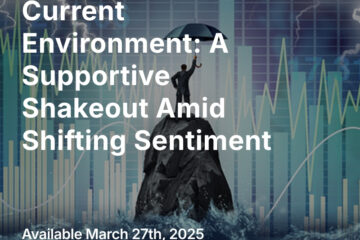All ears are waiting to hear what Fed Chair Powell has to say at Jackson Hole tomorrow. Much of the recent rally was predicated on a tacit assumption by market participants that Powell has hinted at a “pivot” in his remarks after July’s FOMC meeting. We don’t believe that a pivot is in the cards, and thus we question the logic of the rally (indeed, as a typical bear-market rally, it really doesn’t have logic — it has ad hoc justifications).
It’s likely that Mr Powell will reiterate the substance of his July remarks as he works to thread an impossibly thin needle — that is, he will indicate that the pace of tightening will likely slow, and yet that the Committee remains committed to “price stability,” i.e., to reining in inflation.
The recent rally has served to reverse some of the tightening that followed on July’s big 75-basis-point interest rate increase, and that is not a welcome reality to Mr Powell and the other Committee members. They need the economy to remain below its growth potential, while not cratering it into recession. We’ve said often before that history suggests this is an impossible task — the Fed does not have the power, and has demonstrated clearly in the past two years that it doesn’t have the understanding needed even if it did have the power.
The next increase will probably be 50 basis points, and not another 75 basis-point shock-and-awe hike. But we observe that there is an elephant in the room: the balance sheet roll off is scheduled to accelerate in September. Any way you look at it, the current liquidity regime is one of tightening, and markets have clearly been resistant to coming to terms with this reality. We think you should.
With two negative quarterly GDP prints, we think the technical recession we’re now in could easily widen into a broader recession, discernable in wider economic data; we suspect that it will not be a long one. Still, we continue to think that as reality sets in, tightening continues, the “pivot” fails to materialize, and analysts begin to rein in their earnings estimates, the market will present a buying opportunity later in the year.
What To Buy Now?
On our ongoing topic of the “revenge of the real,” we heard news that Japan is preparing to reverse its closure of its nuclear plants — and potentially begin developing next-gen nuclear technology. We view uranium as a durable aspect of the “revenge of the real” theme. There will be no solution to global energy demands, or global concerns about carbon emissions, without nuclear power.
More generally, agriculture and energy are uniquely positioned to have big up moves. Everything else is Fed-, inflation-, and recession-dependent — but those “real” themes have the potential to move in a way that’s uncorrelated with the macro issues. In general, if you are engaging in some speculative trading, we would avoid consumer discretionary, and remain close to necessities.
At the other end of the spectrum, for some of our more risk-averse clients, recent Fed rate increases mean we can buy short-term Treasuries that offer a positive yield. It may be well under inflation, but at least it is no longer a zero yield on cash.
Thanks for listening; we welcome your calls and questions.



